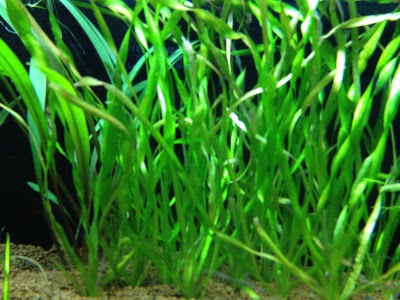Vallisneria Plant
Category: Pond Plants

Facts about Vallisneria plants. The Vallisneria plants are easy to culture in an aquarium. Their requirements for survival in an aquarium are also easy to maintain and also lots of light, enough gravel at the base, a water soluble nutrient and proper planting. While doing the plantation, their white crown bases are kept open above the gravel. The Vallisneria plant is cheap, easy to cultivate and provides great appearance to the aquarium. The Vallisneria plant can be placed in the back, in sides or in the middle wherever they look fit.
The Vallisneria plant has got its name by the long spiralling stalk (female flowers).
Appearance of Vallisneria plants
The Vallisneria plants have thinner branches that wave upwards. Upon full growth they are not withdrawn; their dense thickets are just reduced to the desirable size. Once a bunch is withdrawn, it takes numerous trials to fix one successfully. The Vallisneria plant grow up to one and half feet high and their leaves up to a quarter inch.
Distribution of Vallisneria plants
Vallisneria plant are found in almost all parts of the globe except the colder regions. The Vallisneria plant are adaptive to both tropics and semi-temperate climates.
Cultivation Notes of Vallisneria plants
Moderate pH (6-7.5) is best for Vallisneria plants. They should not be put in hard water. If the source itself provides hard water, non-hard water must be mixed with it or an acidifying agent can be mixed to neutralise the alkaline nature.
Use of underground filter is quite unnecessary for the Vallisneria plant. Silica and gravels can be used as substrate.
The best lighting solution for this type of plants is full spectrum fluorescents as other means of lighting would not practically reach them in a sufficient amount. The Vallisneria plant should not be buried more than its root base.
Reproduction of Vallisneria plants
Two distinct types of propagation are seen and also sexually (flowering) and asexually (vegetative). The male and female flowers are seen in different plants (dioecious). The Vallisneria plant stems bearing flowers can grow as fast as 3/4 inches per hour (2 cm per hour). The stem having the male flower is short and hence when the flower releases pollinating particles they move up to reach the female flower and pollinate.

 Back To Category Pond Plants
Back To Category Pond Plants